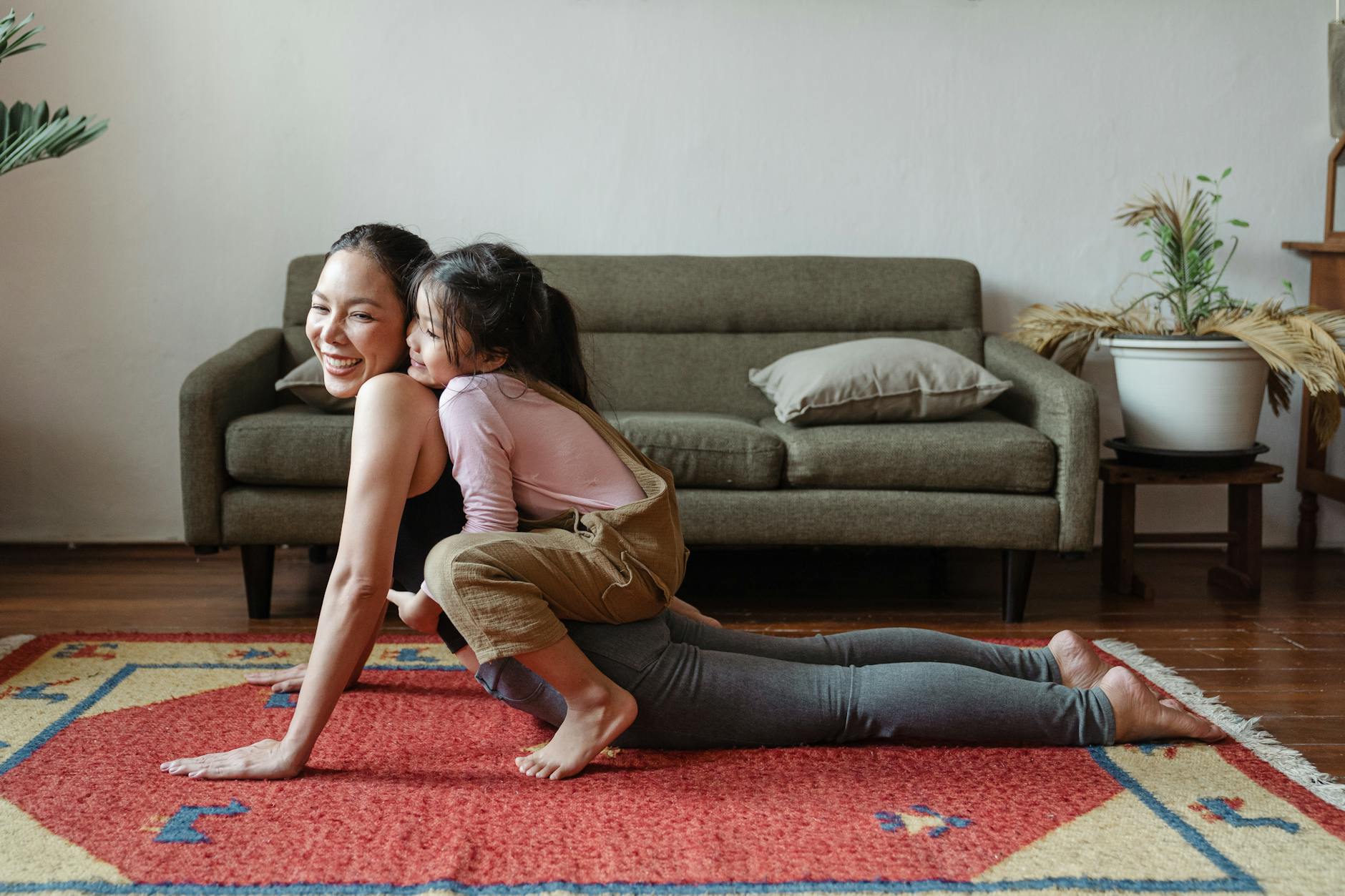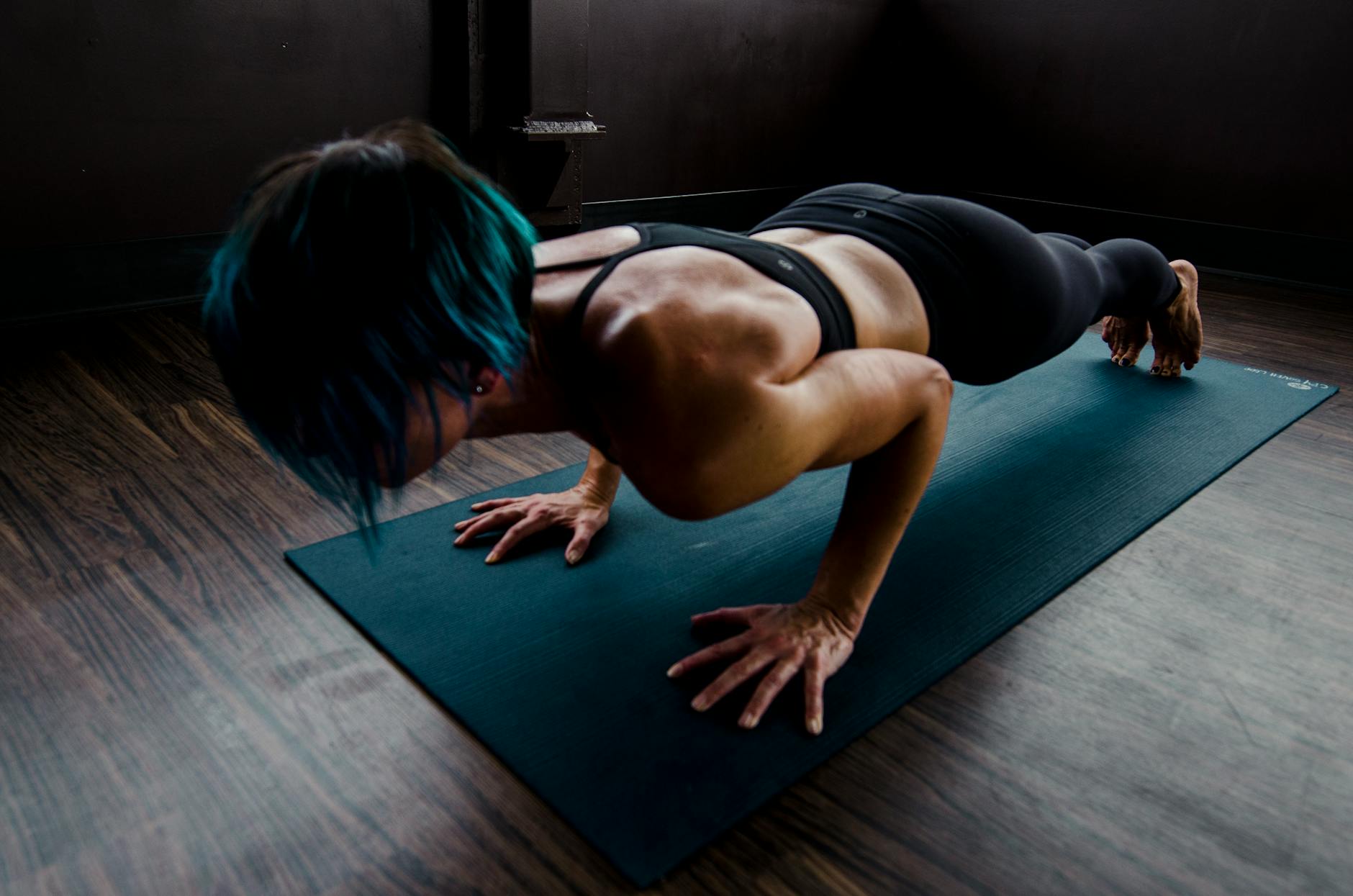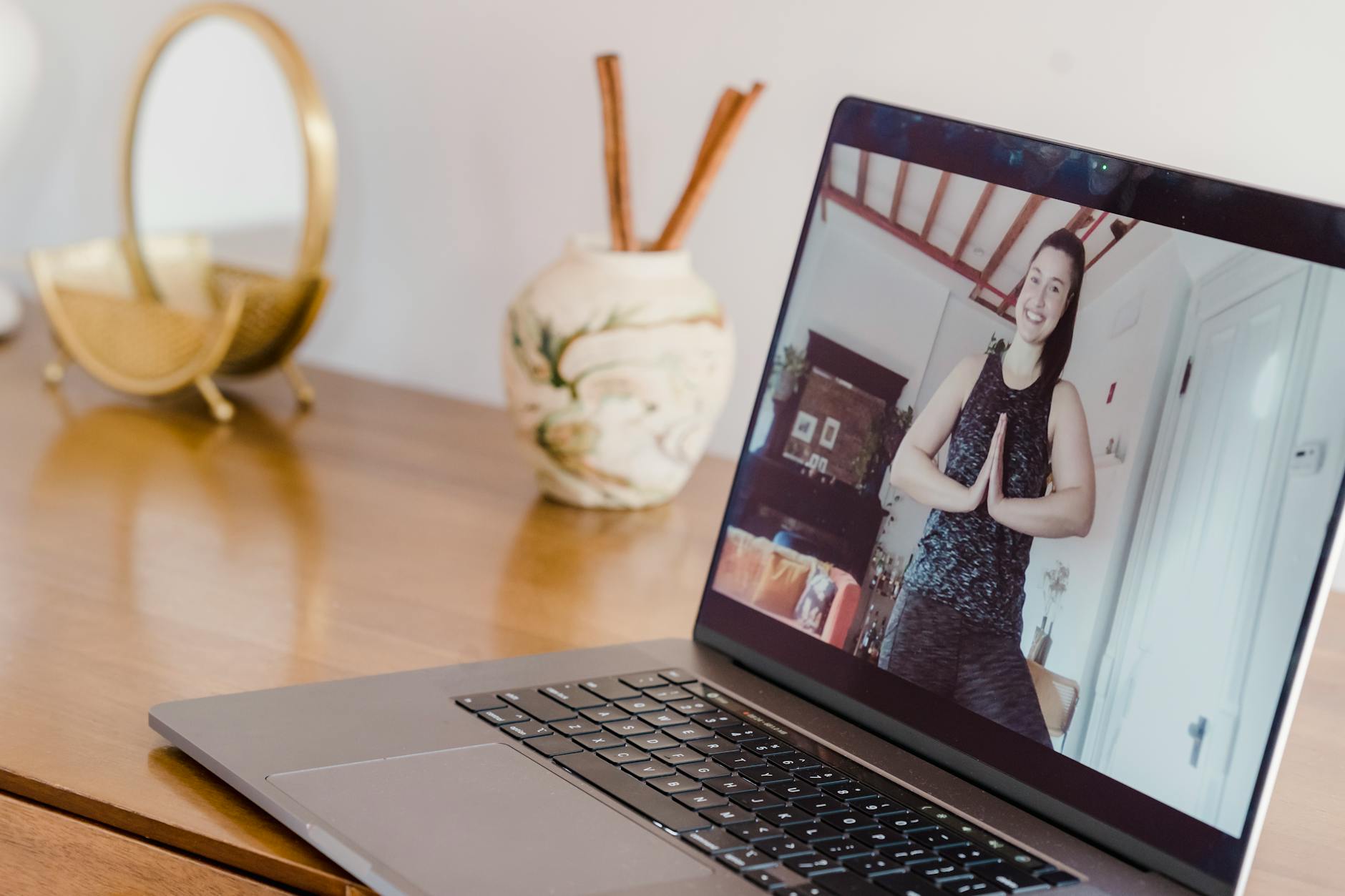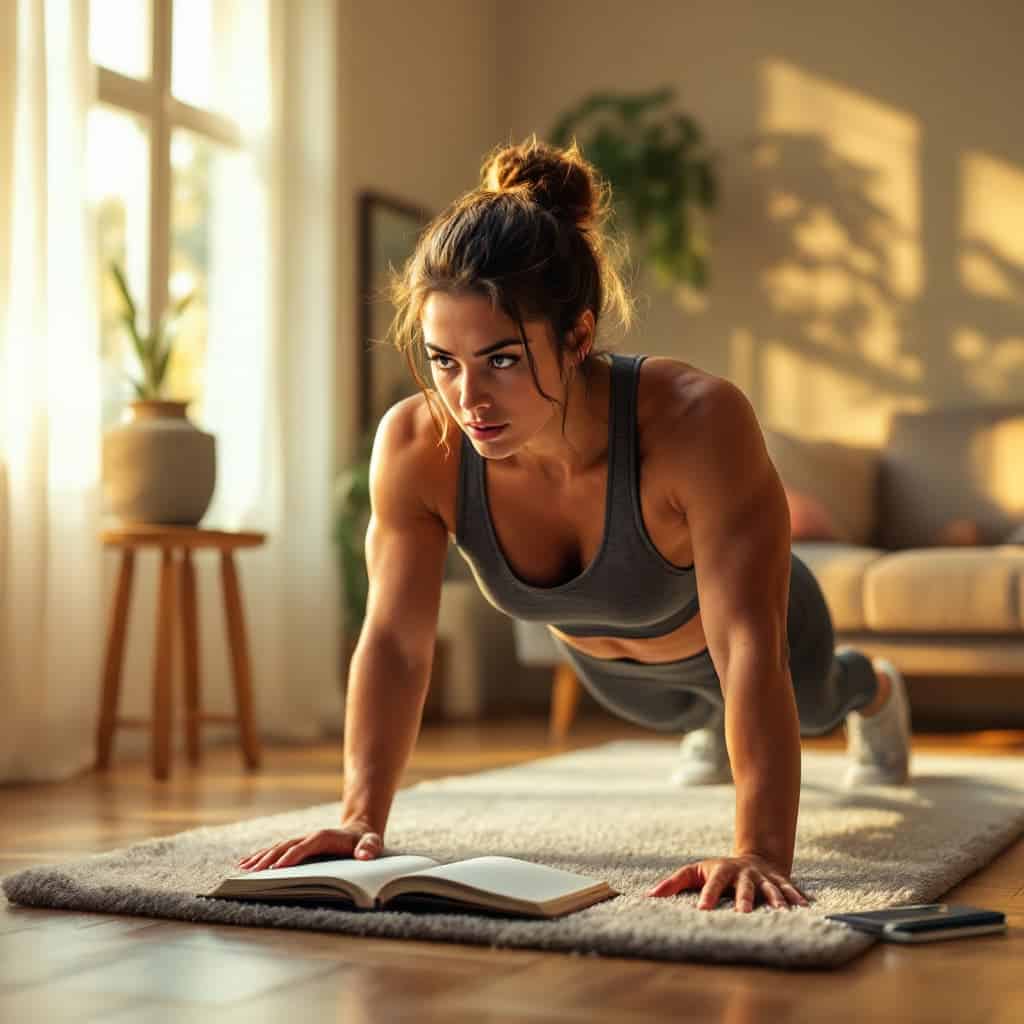I started during a brutal workweek, when I had zero time and a high stress load. Ten quiet minutes on my living room floor turned into a steady habit that kept me sane and stronger. If you’re wondering how to start working out at home without equipment for beginners, here’s the short answer: start small, keep it simple, and show up most days.
Home sessions save time, skip gym fees, and help you build confidence quickly. Wins stack quickly when you control your space and schedule. If you want step-by-step support, you can grab my plan here: Start your free 7-day home workout plan.
In this post, I’ll show the mindset that makes consistency easy, the simple setup you need, and the exercises that give the most return for beginners. I’ll also share how to track progress so you know it’s working, even on busy weeks.
We’ll keep the barrier to entry low. Think short warmups, basic bodyweight moves, and clear cues you can follow without pausing a video. No equipment, no fancy timers, just you, the floor, and a plan that fits between meetings.
If you like a quick follow-along to get moving today, try this beginner session: https://www.youtube.com/watch?v=cbKkB3POqaY. Start with that, then come back for the full breakdown so you can keep building without burning out.
Table of Contents
Key Takeaways
 Photo by Mikhail Nilov
Photo by Mikhail Nilov
Here is what matters most when you want results without gear. Keep it simple, protect your joints, and build a habit you can repeat on busy days.
Start tiny, then stack wins
Start with 10 minutes, 3 to 4 days a week. Add 2 to 5 minutes when sessions feel easy. Small steps beat perfect plans.
- Rule of thumb: do less than you think you need, but do it often.
- Missed a day? Do a 5-minute reset and move on.
Use a simple, repeatable plan
A basic flow covers warmup, strength, and a short finisher.
- Warmup: marching in place, arm circles, hip hinges.
- Strength: squats, push-ups (or incline), glute bridges, plank holds.
- Finisher: 30 seconds of fast steps or shadow boxing.
For extra move ideas, this list of at-home exercises without equipment from Healthline is solid: 30 Moves to Make the Most of Your At-Home Workout.
Form first, always
Good form builds strength and saves your back and knees. Move slow, control the last inch, and keep a neutral spine. If a rep breaks your form, stop there.
- Scale smart: use a wall or chair for push-ups and squats until you own the pattern.
- Quality beats quantity every time.
Track progress in two ways
Numbers keep you honest and motivated.
- Performance: reps, sets, time under tension, or plank seconds.
- Consistency: check off workout days on a calendar or app.
Example: Week 1 plank 20 seconds, Week 2 plank 25 to 30 seconds. That is progress.
Aim for full-body, 3 times per week
Full-body sessions give the best return for beginners. Try Monday, Wednesday, Friday. On off days, walk or stretch.
A clear starter flow you can follow is here: The Beginner Bodyweight Workout.
Recovery is part of the plan
Sleep 7 hours, drink water, and eat protein with each meal. Soreness is normal, sharp pain is not. If a move hurts, switch or reduce range.
- Green light: mild soreness, steady breath, smooth reps.
- Red light: pain, dizziness, or joint pinches.
Remove friction at home
Set up a small workout spot and keep it tidy. Put a mat by the couch, save a 10-minute timer on your phone, and pick a set time each day. Less friction means more workouts.
Expect results on a simple timeline
- Week 1 to 2: better energy and mood.
- Week 3 to 4: tighter form and more reps.
- Week 6 to 8: visible tone, better posture, and stronger core.
If you are asking how to start working out at home without equipment for beginners, this is the blueprint. Start tiny, protect form, and show up most days.
Why Home Workouts Without Equipment Are Perfect for Busy Beginners
 Photo by Ketut Subiyanto
Photo by Ketut Subiyanto
When work runs your day, simple beats perfect. Bodyweight sessions fit into small windows, cost nothing, and remove excuses. They also steady your mood, which makes the habit stick. Research backs this up, since body-weight exercise is effective, convenient, and can be done anywhere, anytime, as noted by Harvard Health: The advantages of body-weight exercise.
If you are asking how to start working out at home without equipment for beginner ,the key is to start small so you don’t burn out.
Setting Realistic Goals to Fit Your Schedule
I use SMART goals that match real life, not an ideal week. Quick wins build trust in the plan.
- Specific: “15 minutes after my first coffee.”
- Measurable: 3 moves, 2 sets each.
- Achievable: Easy when tired, scalable when fresh.
- Relevant: Supports energy, focus, and stress relief.
- Time-bound: 4 weeks, then review.
A simple starter layout:
- Day 1: Squats, incline push-ups, plank.
- Day 2: Glute bridges, rows with a towel, side plank.
- Day 3: Reverse lunges, chair dips, dead bug.
Short bouts count. Stacking two 10-minute blocks works as well as one long session for many people. See why mini sessions work here: The Benefits of Doing Multiple Short Workouts Each Day.
My personal tracking tip: use a sticky note on the fridge. I write the date, session length, and one win, like “held plank 25s.” No app, no scrolling, just proof I showed up.
Creating a Dedicated Workout Space at Home
You do not need a gym corner. You need a clear floor the size of a yoga mat. Pick a spot you pass daily, like beside the couch or at the foot of your bed.
- Clear clutter for safety and focus.
- Keep a mat or towel visible, plus a water bottle.
- Save a 15-minute timer preset on your phone.
I set up right after work. Shoes off, mat down, start the timer. The quick setup removes friction, lowers stress, and turns movement into a daily reset. Over time, this tiny ritual anchors the habit and supports long-term progress, both for fitness and mental health.
Essential Bodyweight Exercises to Build Strength and Endurance
 Photo by Karl Solano
Photo by Karl Solano
Here is the short list I rely on when time is tight. These moves build a strong base, protect your joints, and fit any schedule. If you are wondering how to start working out at home without equipment for beginners, start here and add reps as form improves.
Lower Body Moves for Strong Legs and Core
Strong legs make daily tasks easier and protect your back. Keep your ribs stacked over your hips and move with control.
- Bodyweight Squat: Stand hip-width, sit back, knees track over toes, stand tall.
- 2 to 3 sets of 8 to 12 reps.
- Beginner tip: use a chair tap for depth and balance.
- Reverse Lunge: Step back, lower until both knees bend, front knee stacks over ankle, drive up.
- 2 to 3 sets of 6 to 10 reps each side.
- Scale: hold a wall or counter for support.
- Glute Bridge: Lie on your back, feet under knees, brace abs, squeeze glutes, lift hips, pause, lower slow.
- 2 to 3 sets of 10 to 15 reps.
- Make it easier: shorten range. Make it harder: 2-second hold at the top.
For more structured guidance, try this simple plan: beginner bodyweight workout plan.
Upper Body and Cardio Options Without Weights
Upper body strength eases desk stress. Light cardio supports heart health and focus on busy days.
- Wall Push-Up: Hands on wall, body in a straight line, lower with elbows at 45 degrees, press away.
- 2 to 3 sets of 8 to 12 reps.
- Progress: move to a counter, then a low bench, then the floor.
- Arm Circles: Stand tall, brace core, draw small circles forward 20 seconds, backward 20 seconds.
- 2 to 3 rounds. Keep shoulders down.
- Jumping Jacks: Land soft, keep ribs down, breathe steady.
- 30 to 45 seconds, 2 to 3 rounds.
- Want fat loss support and stamina ideas? See these proven ways to burn fat naturally at home.
If you want more options, this guide covers basics well: The Beginner Bodyweight Workout.
Full-Body Circuits to Maximize Your Time
Use a simple 20-minute circuit. Move with purpose, rest when form slips, and breathe through your nose when you can.
- Minute 0 to 5: Warm up, march in place, arm circles, hip hinges.
- Circuit (3 rounds, 12 minutes total):
- Squats, 10 to 12 reps.
- Wall push-ups, 8 to 12 reps.
- Glute bridges, 12 to 15 reps.
- Plank, 20 to 30 seconds.
- Jumping jacks, 30 seconds.
- Rest 30 to 45 seconds between exercises as needed.
- Minute 17 to 20: Easy walk in place, long exhales, light stretch.
Key cues:
- Keep a neutral spine and brace your core before each rep.
- Stop a set if your form breaks.
- Pain means switch or shorten the range.
Overcoming Common Challenges and Staying Motivated
 Photo by Miriam Alonso
Photo by Miriam Alonso
Sticking with a new routine at home gets easier when I keep the process simple and the wins visible. Fatigue, busy days, and plateaus will pop up. That is normal. Here is how I stay consistent without turning workouts into another chore.
If youare wondering how to start working out at home without equipment for beginners, these tactics can help you establish the habit.
Tracking Progress Without Feeling Overwhelmed
I track just enough to see progress without turning it into homework.
- One-line log: After each session, I jot date, length, and one win. Example: “15 min, squats felt smoother.” A sticky note or notes app works.
- Weekly photo: Same spot, same light, once a week. No daily body checks, no stress.
- Simple metrics: Reps, plank seconds, or total minutes moved. I compare Week 1 to Week 4, not day to day.
- Celebrate small wins: First 10 workouts, first 60-second plank, three weeks with 3 sessions. I mark it on a calendar and treat myself to a new playlist or coffee.
If you want a quick refresher on goal setting and motivation, this guide on how to motivate yourself to work out at home covers the basics well.
What to Do When Motivation Dips
Motivation dips are a signal, not a failure. I reset, reduce, or refresh.
- Use a 5-minute starter: March in place, squats, wall push-ups. If I feel better after 5 minutes, I keep going. If not, I stop and still count the win.
- Vary the routine: Swap squats for split squats, try a different finisher, or follow a new video. Novelty wakes up effort. For more ideas, this post on getting motivated to work out at home offers helpful tips.
- Pair it: I save a favorite podcast for workouts only. Habit stacking turns exercise into “me time.”
- Schedule rest: I plan at least one full rest day. If I feel run down, I take a walk or stretch and return stronger tomorrow.
- Ask for accountability: I text a friend my plan for the week. A quick check-in keeps me honest without pressure.
The goal is steady effort, not perfect streaks. Reduce the friction, keep the wins visible, and let consistency carry the load.
FAQ
 Photo by Tim Samuel
Photo by Tim Samuel
Busy schedule, small space, and no gear? I have been there. Here are clear answers to the most common beginner questions so you can start strong and stay consistent.
How long should my first workouts be?
Start with 10 to 15 minutes. That is enough to build momentum without draining your energy. When it feels easy, add 2 to 5 minutes or another set. Short sessions done often beat long sessions you skip.
How many days per week is best?
Aim for 3 full-body sessions per week. Think Monday, Wednesday, Friday. On non-lifting days, a 10 to 20 minute walk or light stretch keeps you moving and helps recovery.
What if I have almost no space?
You only need the area of a yoga mat. Use moves that stay in one spot: squats, glute bridges, wall push-ups, planks, dead bugs, and step-backs. If noise is a concern, skip jumping and use low-impact cardio like fast marching in place.
Do I need a warmup if I am short on time?
Yes, keep it simple. I use this 3-minute primer:
- March in place, 60 seconds.
- Arm circles and shoulder rolls, 60 seconds.
- Hip hinges and gentle squats, 60 seconds. Warm muscles, better form, fewer tweaks.
How do I progress without equipment?
Pick a move, then use one of these:
- More reps: add 1 to 2 reps per set.
- More sets: add 1 set when you finish strong.
- Slower tempo: 3 seconds down, 1 second up.
- Shorter rest: trim rest by 10 to 15 seconds. When form slips, reset the reps and build back up.
Can I lose weight with bodyweight workouts alone?
Yes, if you pair training with smart eating. Focus on protein, veggies, and whole foods, and keep an eye on portions. Use brisk circuits or short intervals for calorie burn. For a simple set of at-home options, this free home workout plan from the University of New Mexico offers clear templates: HOME WORKOUT PLAN.
How do I handle soreness?
Mild soreness is normal. Sharp pain is not. Use these steps:
- Move lightly the next day, like a walk or mobility flow.
- Hydrate and sleep 7 hours.
- Keep protein steady to support recovery. If soreness spikes, reduce sets or range of motion for a week.
What if my knees or wrists hurt?
For knees, use box or chair squats, shorten your depth, and keep knees tracking over toes. For wrists, try wall push-ups or fist or neutral-grip planks on a sturdy pair of yoga blocks or rolled towels. Pain means change the angle, range, or exercise.
Do I need cardio too?
Blend it in. After strength work, do 1 to 3 rounds of 30 seconds of fast steps, shadow boxing, or high-knee marching. If your day is slammed, a 10-minute walk after lunch checks the box.
What should a simple beginner session look like?
Keep it tight and repeatable:
- Warmup, 3 minutes.
- Squats, 2 sets of 8 to 12.
- Wall push-ups, 2 sets of 8 to 12.
- Glute bridges, 2 sets of 10 to 15.
- Plank, 20 to 30 seconds, 2 rounds. Optional finisher, 1 minute of fast steps. This is how to start working out at home without equipment for beginners without getting overwhelmed.
Can I split my workout into smaller blocks?
Yes, micro-sessions work well. Two 10-minute blocks, morning and evening, provide the same total volume with less fatigue. I use this on hectic days and stay on track.
How do I stay consistent when work gets busy?
I rely on three anchors:
- Same time daily: tie training to a habit, like after coffee.
- Visible cue: mat on the floor, shoes by the couch.
- Tiny minimum: 5 minutes counts. Most days, five turns into fifteen. If you want a fuller roadmap, this guide on starting home workouts without equipment breaks it down step by step: How to Start Working Out at Home Without Equipment for Beginners.
When will I see results?
Energy bumps show up in 1 to 2 weeks. Strength and posture changes land by weeks 3 to 4. Visible muscle tone often shows by weeks 6 to 8, assuming steady training, decent sleep, and balanced meals.
What if I miss a week?
No guilt. Restart with one light session: squats, wall push-ups, glute bridges, and a short walk. Keep the door open and build back to your normal plan within a week. Consistency over perfection wins.
Conclusion
You now have a clear, simple path for how to start working out at home without equipment for beginners. Start tiny, protect your form, and repeat the same few moves on a steady schedule. Small wins add up fast, and they fit inside a busy day.
Take one step now. Do 10 slow squats, then a 20 second plank. If you feel good, add wall push-ups. That is your first session, done in minutes. If you want help keeping the streak alive, I share my simple habit system here: how to create consistent exercise habits.
If pain or health issues are on your mind, talk with a healthcare pro or a qualified coach. Keep tracking basic metrics, like reps and plank time, and review them every few weeks. Progress is proof the plan works.
You started this post looking for a plan you can stick to. You have it now, and the next rep is the only one that matters.
I am rooting for you, and I would love to hear how your first week goes.


It is really a nice and helpful piece of info. I’m glad that you shared this useful info with us. Please keep us up to date like this. Thank you for sharing.
Thank you!